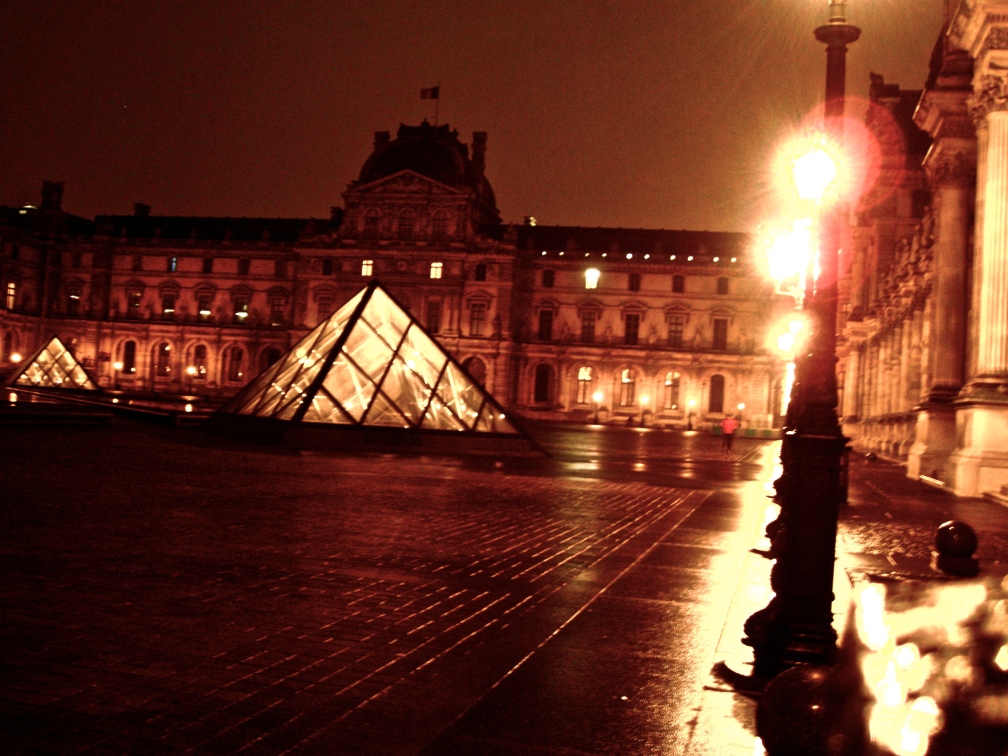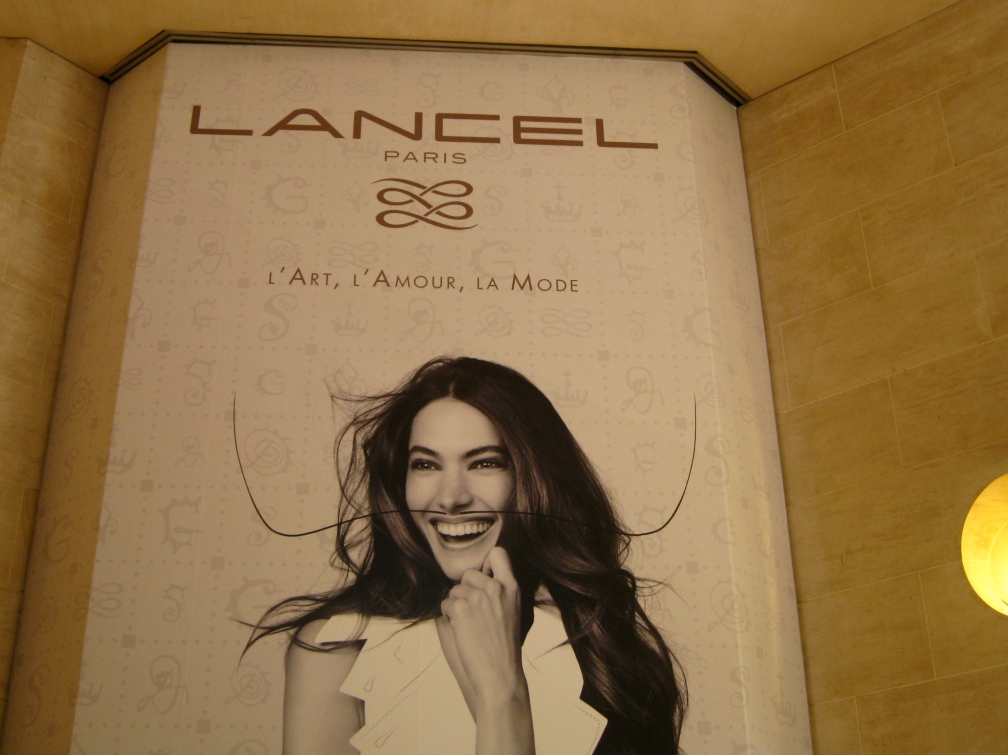
The Eiffel Tower as seen from the Louvre

The Eiffel Tower as seen from the Louvre

Nature, by definition, is something that exists on its own accord. For this reason any attempt to make something more natural than it already is will end in failure. Nothing, after all, can be more natural than that which simply is.
So when this principle is applied to the above photo, a strange paradox arises. Though the photo is as “real” as can be, the truth is it simply doesn’t “look real”. The photo’s colours seem almost too vibrant and too bright to be the actual ones that my cameras’ lenses captured on that sunny April afternoon. One could in fact be forgiven for assuming the image to be a CGI model of a city’s beautification project, such is the almost too perfect nature of its composition. Aside for the blurring taking place on the left-hand side – a result of the smudges on the window through which I captured the moment – there is no other sign of its being a photo.
Although one could make the case that no photo is completely natural; that the rawness of the photo depends entirely on the camera’s settings; the fact remains that some photos simply look more “real” than others. However hard I try to make this photo look “real”; however much I edit it so that the colours look natural; the photo remains its stubborn self. So in the end, I changed the photo back to its original settings.

One of my favourite shots of the Louvre at night. The combination of dark earthly hues and brilliant light, not to mention the blurring that occurs in the bottom-right corner, evoke the look of the music video of Jeff Buckley playing his take on Leonard Cohen’s Hallelujah.
Although Leonardo da Vinci is known as the consummate Renaissance man in every sense of the term, his genius is widely misunderstood. His perhaps unparalleled brilliance lies not in his artistic vision, his eye for invention, or his universal pursuit of excellence – it lies in his marketing savvy. Just imagine: if Leonardo hadn’t claimed Mona Lisa was his best work, would the Louvre attract the busloads of tourists that it currently does?
It is a curious fact of human nature that if people are told that something is immensely valuable, they take every possible measure to check it out. The fact that Leonardo’s painting is small and sits behind bullet-proof glass does not faze people from taking their time to set eyes on it – time which could so easily be spent looking at other artworks in the gallery. It goes without saying that the portrait is greeted by the public with a kind of religious zeal, its mysteriousness only serving to heighten the awe with which it is met. In that sense, the Mona Lisa is like a divine relic. People take photos of it because it connects them to something more sacred and enduring than the ephemeral objects that make up their everyday lives.
It is so easy to forget that most works in the Louvre are worthy of attention; they were part of the French king’s collection for a reason. In fact, one could argue that the other paintings in the Italian Renaissance section of the Louvre are more worthy of attention than the Mona Lisa. But this kind of observation, this modest piece of insight, falls upon deaf ears. Most people ignore the other artworks in the gallery, or only give them a cursory glance, for they are not suffused with the label of “best artwork ever made.” Even Leonardo’s other works suffer the fate of decaying in relative obscurity – that is, insofar as a former royal palace can be considered obscure. As is the case with Bacchus, a product of Leonardo’s workshop – though, critically, not necessarily painted by the man himself – one can view it without having to contend with crowds and cameras and camera crowds:
If people didn’t rush around the Louvre, seeking out the works highlighted in their travel guides, they just might appreciate the other artworks around them. Art isn’t a science: there’s no right or wrong answer. But there are good ways to look at a painting – and standing in a crowd taking photos of bullet-proof glass probably isn’t one of them.

The Marcel Duchamp Appreciation Society
Imitation, it is said, is the sincerest form of flattery. After all, what better way does one have to tribute an artist’s work than to produce it oneself? This is a question I spent much time pondering while I was living in Paris, a city I have always equated with art. Throughout the course of human history, there has perhaps never been a city more synonymous with artistic production than the so-called City of Light. For that reason alone, I felt inspired to leave my own mark on Paris. After all, what better way is there to salute the prince of Troy’s namesake than to do what its most famous citizens have been doing for centuries?
But before I could get carried away with the thought of securing my name in the latter chapters of next century’s art history textbooks – hélas! I then remembered the humble limits of my artistic ability. Like a grizzly bear performing the duties of a bus driver, my way with the canvas leaves little to the imagination in terms of the quality of output. Were my craftiness an ammunition ship, it would collide with a whale and sink on its maiden voyage.
Not letting the vérité get in the way of a good histoire, however, I stumbled upon an alternative to making good art: pretending to make good art. I realised that if I were photographed pretending to paint famous canvases, I would be able to claim artistic immortality for myself. Strictly speaking, there should be nothing wrong with feigning eminence in a field in which one has had no exposure. You probably cannot copyright the art of copying someone else’s work, lest charges of hypocrisy bring your name into disrepute. In other words, this form of imitation par excellence does not make you guilty of any misdemeanors. Should anyone accuse you of plagiarism, you should accuse them of not knowing what originality actually is.
So on a chilly February morning, I went to the Gibert Jeune store on boulevard Saint Michel and bought myself a cheap paintbrush. No one would know that the paintbrush I had supposedly used to paint my masterpieces had only cost a couple of euros.
In the following month, I made a visit to the Centre Pompidou. Having successfully painted a 16th century oil on canvas on a previous occasion, I decided to make something more modern. So I found a Kandinsky and got to work. Needless to say, having my friend take a photo of me in front of Composition VIII was embarrassing – what with all the tourists watching us; but thankfully, I was spared the ignominy of having a museum worker rebuke me. The nearest worker was too busy texting on his phone to notice anything unusual being set afoot.
With those successes behind me, I felt confident enough to tackle the Louvre. On the first day of April, a group of friends and I went to the former French king’s former residence, taking full advantage of the free museum visit that the city offers on the first Sunday of each month. We had a look around the Richelieu and Sully wings before making our way to the Denon wing, where the Italian Renaissance paintings are based. It was my intention to get snapped in front of a Leonardo or a Raphael; however, the sheer numbers of people in the gallery made doing so a challenge. I did manage to get a friend to take a photo of me before a painting, but it came out blurry. At that moment, my hopes seemed to fade into oblivion, as museum workers made their way down the gallery floor telling people of the museum’s impending closure for the day. Disheartened, I aborted my mission and made my way out of the room, towards the staircase upholding Winged Victory.
But before I left the museum altogether, I saw a painting to my right and asked my friend to take a photo of me – and quickly! It was Sandro Botticelli’s Venus and the Three Graces. She took a photo, but perhaps owing to the low lighting in the room, the photo came out blurry. Then after I reviewed the photo, a worker came up to me and said something like: “Faites attention, monsieur! Ne touchez pas la peinture! Elle est très vieille et très fragile!”
So in the end, my Louvre adventure did not go exactly according to plan; but at the very least, I did get a blurry photo of myself painting a Botticelli. Who ever knew I could depict the goddess of love with such finesse?
Paris in May 2012: What I like about this photo is the way it plays with the buildings in the distance. The overcast sky of that May afternoon causes the Eiffel Tower and the Arc de Triomphe to appear as shadowy apparitions. If they were any clearer, they would probably undermine the photo’s composition. The Louvre’s buildings and plaza are already so bursting with colour that to have just as much colour in the distance would make the photo look even less real than it currently is. Instead, the grey, unassuming quality of the background attracts the eye, giving off the impression that what is concealed from view is more meaningful than what can be seen from this perspective.